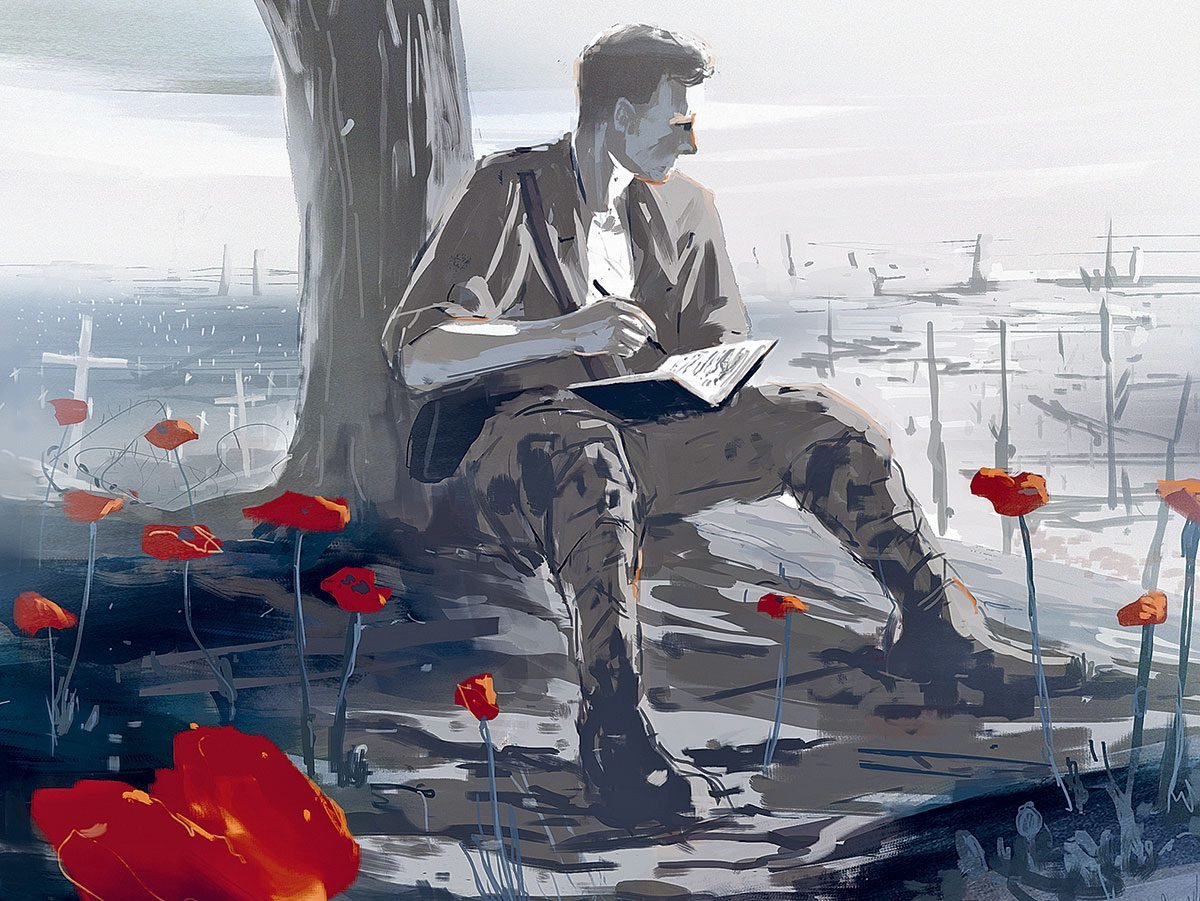
John McCrae, The Man Who Wrote In Flanders Fields
Early on the morning of May 3, 1915, John McCrae sat wearily near his field dressing station, a crude bunker cut into the slopes of a bank near the Ypres-Yser Canal in Belgium. A Canadian military surgeon, he had been at the French line for 12 days under incessant German bombardment, and the toll of dead and wounded had been appalling.
From his position on the road along the canal running into Ypres, McCrae wrote: “I saw all the tragedies of war enacted. A wagon, or a bunch of horses or a stray man, would get there just in time for a shell. One could see the absolute knockout; or worse yet, at night one could hear the tragedy, a horse’s scream or the man’s moan.”
The previous night he had buried a good friend, Lt. Alexis Helmer of Ottawa, blown to pieces by a direct hit from a German shell. Now, as he sat in the early morning sunshine, he could hear the larks singing between the crash of the guns. He could see the rows of crosses in a nearby cemetery.
The field where the cemetery lay was thick with scarlet poppies, their dormant seeds churned up by the guns, blooming despite—or because of—the carnage. McCrae took in the scene and quickly wrote a 15-line poem. Speaking as from the dead to the living, “In Flanders Fields” was to become the most famous poem of the Great War—perhaps of any war.
John McCrae’s family had long shown a penchant for military service and poetry. Back in their native Scotland, McCraes had fought against the English in the 1715 and 1745 rebellions. From 1688 to 1693, they had compiled the famous Fernaig manuscript, containing Gaelic poetry by them and others.
McCrae’s father, David, showed more interest in the militia than in the family wool business in Guelph, Ontario. He organized a local artillery battery in response to the Fenian raids from the United States in 1866 and subsequently served with the regular army.
McCrae was born in Guelph on November 30, 1872. His mother, Janet, loved to read poetry to the boy and his brother and sister.
Young McCrae joined the Highland Cadet Corps at Guelph Collegiate Institute and later entered his father’s militia unit as a bugler, then became a gunner. He was also a talented student, winning a scholarship at 16 to study at the University of Toronto.
That’s where he had his first encounter with death. On March 15, 1890, he wrote to his mother about the loss of a sweetheart, 19-year-old Alice McRae, from typhoid fever. “I have been reading ‘In Memoriam,'” he wrote, “and always find myself substituting ‘my girlfriend’ for the ‘Arthur’ of the poem.” Perhaps because of his love for Alice, McCrae never married.
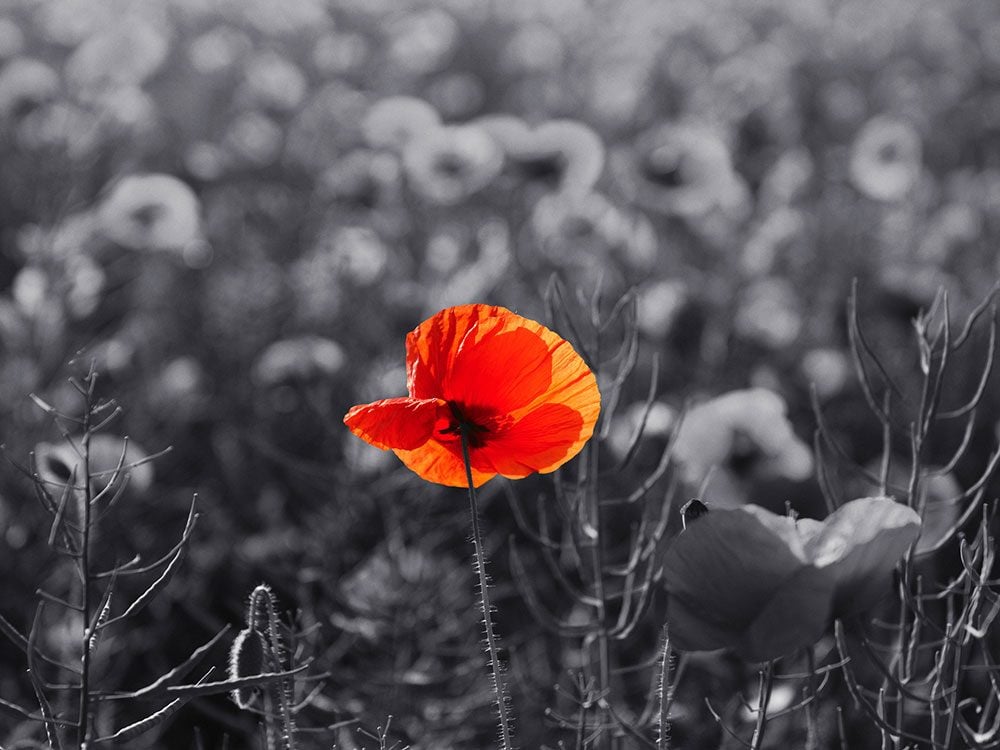
How “In Flanders Fields” Came to Be
In 1899, McCrae took up a fellowship in pathology at Montreal’s McGill University. He had barely acclimatized himself to his new duties when military service called again. Volunteers were being sought for the Boer War, and McCrae was quick to offer himself.
He went not as a medical man but as a lieutenant with an artillery unit, spending the better part of a year in South Africa, much of it in fruitless treks as the British forces pursued the elusive Boers. But he did see action and earned a reputation as a clever and popular officer.
Back in Montreal in 1901, he plunged into his medical work as a resident assistant pathologist at the Montreal General Hospital. He was popular with students and staff alike and had, according to his friend and colleague Andrew Macphail, a smile that was “ineffable. It filled the eyes and illumined the face.” Six feet tall and 180 pounds, McCrae nonetheless walked, said Macphail, “as if he were about to dance.”
In demand at dinner parties, he seemed to have an endless fund of yarns suitable for every occasion. Once, after he had accompanied the Governor General on a lengthy northern trip, some of it by canoe, Lord Grey remarked, “We travelled 3,000 miles, and McCrae had a story for every mile.”
By 1914, McCrae was at the top of his profession. In July, he finished editing the second edition of a pathology textbook he had co-authored. When war was declared, he was attending a conference in Britain.
From there, he cabled an old Boer War comrade and offered his services. He was appointed surgeon to the 1st Brigade, Canadian Corps Artillery, with the rank of major and second in command. McCrae’s South African experience had left him with no illusions about what was in store. Before taking up his post, he wrote his sister: “Out on the awful old trail again! And with very mixed feelings, but some determination.”
After a miserably wet winter on Salisbury Plain in England, his unit sailed for France in February 1915. On April 20, the Canadian division to which McCrae’s unit belonged was ordered to relieve a French division in the Ypres Salient.
On May 2, he wrote to his mother: “Heavy gunfire again this morning. Lieutenant H. was killed at the guns. I said the Committal Service over him as well as I could from memory. A soldier’s death!”
The next morning he wrote “In Flanders Fields.”
Here are 20 powerful Remembrance Day quotes to share on November 11.
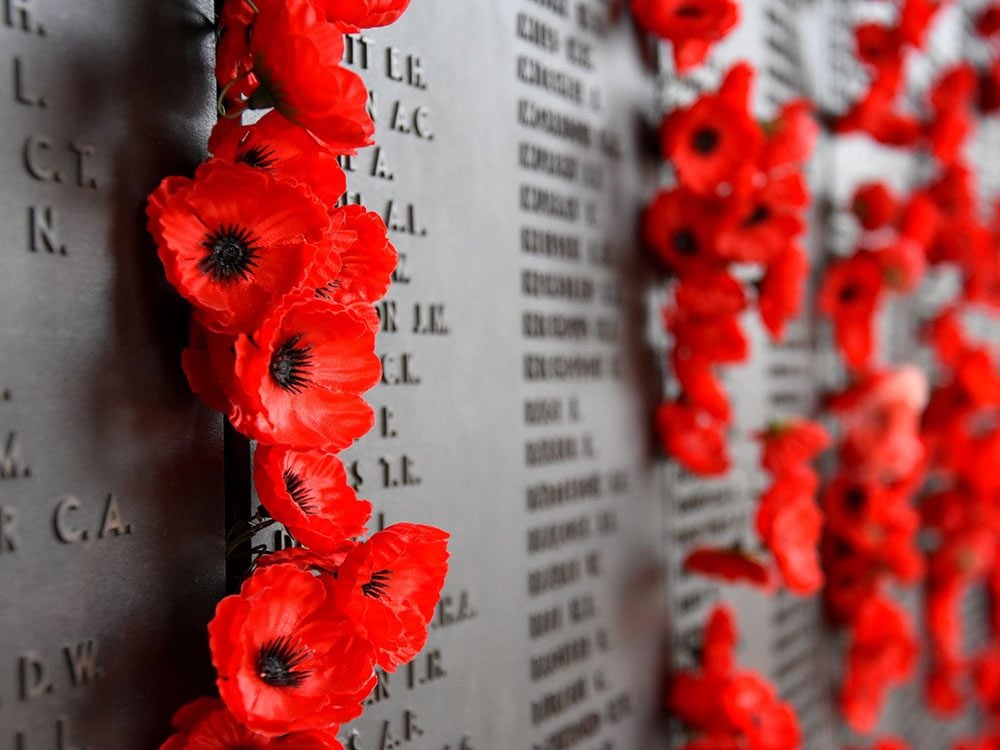
The Enduring Popularity of “In Flanders Fields”
McCrae sent his poem to The Spectator, a British weekly magazine, which rejected it. The piece was finally published, anonymously, on December 8 in Punch, Britain’s leading satirical magazine.
The verses caught on quickly with soldiers and civilians alike. Wrote Macphail, then serving at the front: “The soldiers have learned it with their hearts, which is quite a different thing from committing to memory. It circulates, as a song should circulate, by the living word of mouth, not by printed characters.”
McCrae’s poem was reprinted and quoted widely throughout the British Empire and the United States. It was used on billboards advertising the sale of the first Victory Loan Bonds in Canada in 1917, helping to raise the astonishing sum of $400 million. It figured prominently in the Canadian general election of that year, when conscription was a major issue.
But McCrae’s experiences at Ypres had altered him irreparably. John F. Prescott, the author of his 1985 biography, wrote: “He was never again the optimistic man with the infectious smile. His friends spoke of his change in temperament in subdued voices, feeling, as one said, that an icon had been broken.” His inseparable companions were his horse, Bonfire, who had accompanied him to the front, and his dog, Bonneau, an adopted war orphan.
On January 24, 1918, McCrae received word that he had been appointed consulting physician to the British armies in France—the first Canadian to achieve that rank. But by then his health was failing. He had suffered from asthma most of his life, but the condition had been exacerbated by the poison gas used by the Germans at Ypres. That night, he took to his bed with a headache and the next day diagnosed himself with pneumonia. He was transferred to a military hospital at Wimereux, just up the coast from Boulogne, France.
At 1:30 a.m. on January 28, McCrae died of double pneumonia and meningitis. The following day he was buried with full military honours in the Wimereux cemetery. Bonfire led the parade decked in white ribbon, with McCrae’s riding boots reversed in the stirrups. A hundred nursing sisters in cap and veil stood in line at the cemetery. One later wrote, “To the funeral all came as we did because we loved him so.”
This letter from a Canadian soldier explains the sacrifice of veterans everywhere.
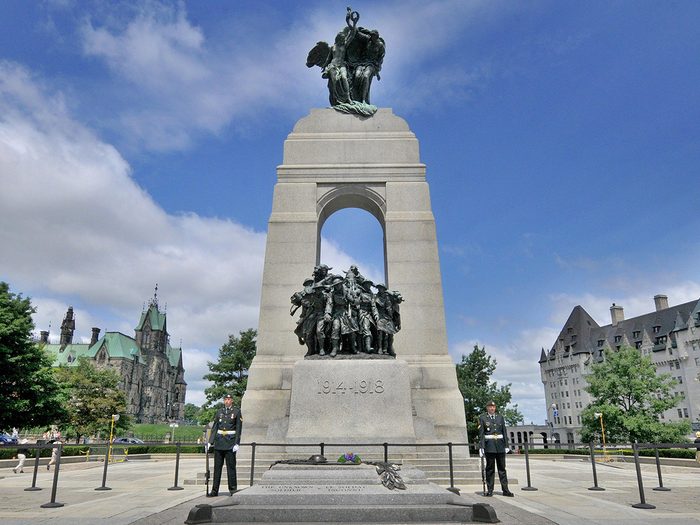
The Legacy of John McCrae
Back home in Canada, tributes were printed in newspapers across the country and in medical journals; memorial services were held in McCrae’s honour; and a stained-glass window was dedicated to him at McGill, bearing the inscription, “Pathologist, Poet, Soldier, Physician, a man among men.”
One of those who had written remembrance poems in response to McCrae’s was Moina Michael, an American teacher in charge of a YWCA hostel in New York. Struck by the idea of the poppy as a symbol, she bought some real ones and distributed them for people to wear on November 11, Armistice Day. Anna Guérin, one of the women at her hostel, took the idea back to her native France in 1921 and set war widows and orphans to work making artificial poppies to raise funds for devastated areas.
The British Legion picked up the idea and in 1921 raised £106,000 for its cause. By 1922, the practice had spread to the United States, Canada, Australia and New Zealand, and disabled veterans were being employed to make the poppies. “Flanders fields have come to Edmonton,” reported a local newspaper that November. “Everywhere the symbolic scarlet poppy shines to say that Edmonton remembers the glorious dead.”
Each Remembrance Day since, volunteers in more than 120 countries have fanned out to distribute the scarlet emblem McCrae made famous. In Canada, tens of thousands of poppy sellers take to the streets every year, raising millions of dollars.
On McCrae’s death, Stephen Leacock wrote, “John McCrae’s poem, ‘In Flanders Fields,’ will live as long as the memory of the heroic struggle of the Canadians that formed its inspiration.”
This month, millions around the world will bear silent witness to that struggle as they pin McCrae’s symbol of sacrifice over their hearts once more.
This gallery of poppy pictures showcases how Canadians remember.
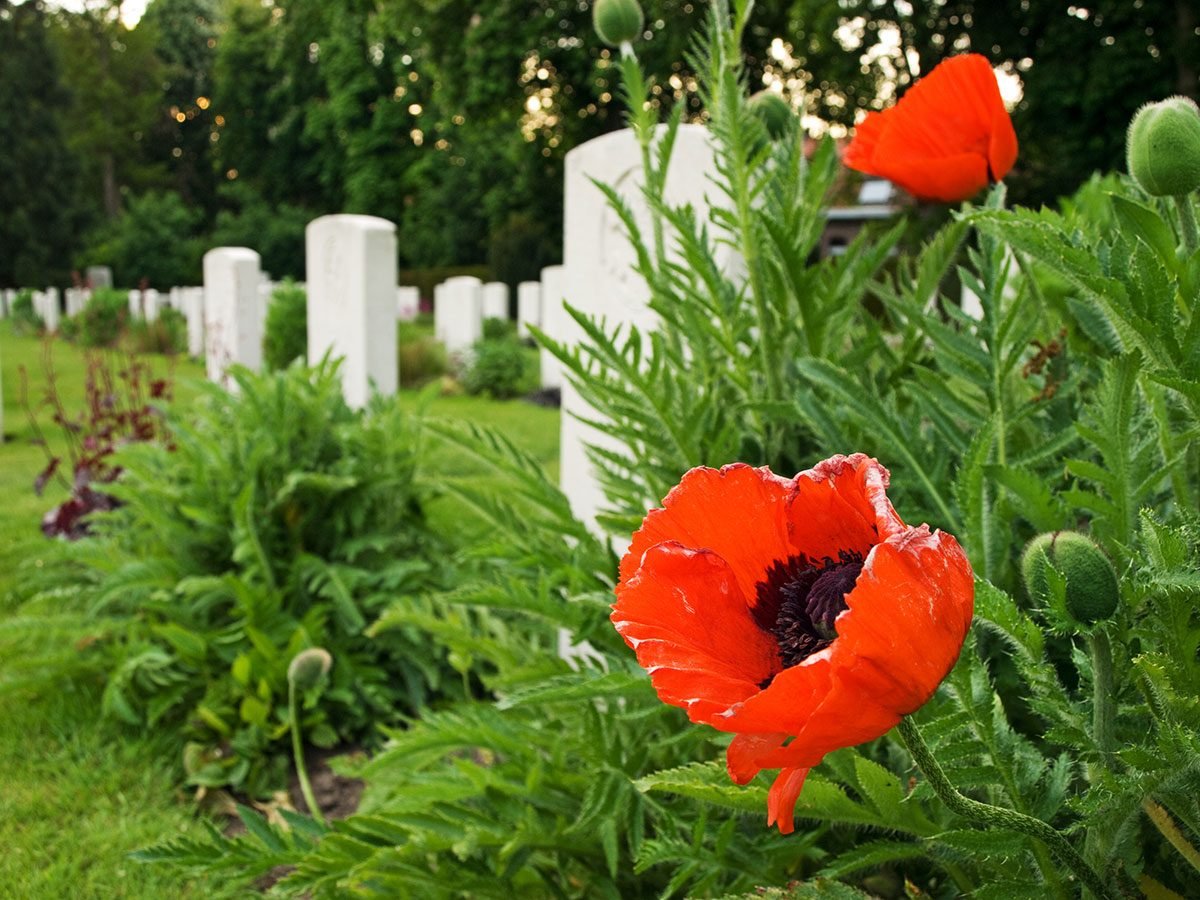
In Flanders Fields
In Flanders fields the poppies blow
Between the crosses, row on row,
That mark our place; and in the sky
The larks, still bravely singing, fly
Scarce heard amid the guns below.
We are the Dead. Short days ago
We lived, felt dawn, saw sunset glow,
Loved and were loved, and now we lie,
In Flanders fields.
Take up our quarrel with the foe:
To you from failing hands we throw
The torch; be yours to hold it high.
If ye break faith with us who die
We shall not sleep, though poppies grow
In Flanders fields.
– John McCrae
Next, check out 30 powerful true stories of Canadian veterans to read for Remembrance Day.